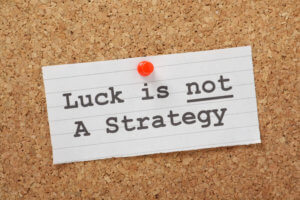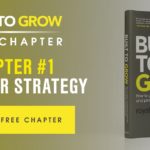
Strategic Plan: What to include in yours
A strategic plan is about making sure you are in the driver’s seat of your business with a clear vision of where it is you want to get to, why you want to go there, and how you’re going to turn your vision into reality.
I’ve previously talked about the important of planning and ‘why failing to plan really does mean planning to fail’, so this blog post focuses more on what you should include in your strategic plan.
But before I do, it’s worth me spending a couple minutes on the word Strategy.
Having spent two decades working with business owners, business leaders, and entrepreneurs, one question I frequently ask is: ‘What is your definition of strategy?’ And my experience is that everyone has a different definition; even members of the same leadership team and business!
What is strategy?

‘A strategy is a changeable set of implementable actions that we frequently revisit and redefine according to shifting market conditions in order to achieve the long term aspiration of the organisation.’
Now, that’s a pretty detailed statement, with lots of moving parts, so let me dissect it to bring it to life.
Strategy is changeable.
One thing is for certain: your strategy must be fluid because it’s constantly exposed to changing external and internal market conditions. We live in a world where the norm is a relentless pace of change, and strategy, by its nature, cannot be rigid.
It is about implementable actions.
It’s no good creating a high level strategy that is so complex in the wording you use and the way you translate it, that it creates confusion. Implementable actions are critical if you want strategy to live within your business. Every single person in the organisation must have alignment and know the part they play every day in delivering the overall business strategy.
We must frequently revisit and redefine.
The whole point about success modelling is learning both what is working, and what is not, so it is really important that we revisit and redefine on a regular basis. You shouldn’t find yourself setting off on your strategy at the start of the year and then come the end and realise you’ve failed to reach your goals, thinking how on earth did that happen? Frequent reality checks enable you to make timely adjustments along the way and adjust course where needed.
And recognise shifting market conditions
The market is constantly shifting and we must be proactive and reactive in addressing changes to ensure we’re ahead of the curve. These changes can be both internal and external. External changes can relate to micro or macro-economic conditions, new regulations, and new competitors entering the market. Internal changes include key people or organisational changes, refinement of processes, a shift in focus or priorities.
To achieve long-term aspiration of the organisation
This is hot-wired to your business purpose, vision, ambition, and goals.
What to include in your Strategic Plan

Those of you who are familiar with my work, Built to Grow and the Business Growth Transformation Framework® will be familiar with the Strategic Plan template I’m about to share.
Exploring the three ‘Zones’ within your Strategic Plan
A robust Strategic Plan, built on the Business Growth Transformation Framework®, consists of nine interlocking strategies, organised into three Zones. Combined, these nine interlocking strategies form the overall Strategic Plan for your business.
Zone One
Is all about ‘big picture thinking’ around your business purpose, analysing the market potential to realise your growth ambitions, and creating tangible differentiation through your compelling value proposition.

Zone One should include;
- Business Purpose, Aspirational Goals, and Growth Ambitions
- Market Potential including the size of the opportunity, the target audience and segments
- Compelling Value Proposition – what are your products & services and what makes them different to your competitors
Zone Two
This is the core of your Strategic Plan sandwiched between Zones One and Three and is all about ‘go-to-market’ strategies.

Zone Two should include;
- Customer – how you create real differentiation through your customer experience
- Marketing and Communications – how you reach and communicate to your target audience
- Business Development and Sales including your sales planning & forecasting
Zone Three
This zone is about enabling success.
The reality is you can create clarity on your business purpose and aspirational goals; understand your market potential through a detailed analysis of your target customer profile; design and build a compelling value proposition; and develop a detailed end-to-end, go-to-market strategy. Then . . . the business falls over because you didn’t pay enough attention to the enablers which will make all this happen.

Zone three includes;
- People Strategy – how you ensure you’ll have the right people in the right seats, inspired and doing the right things (training, development, succession planning, talent mgt. etc)
- Operational Excellence – your ability to deliver on customers’ needs and wants.
- Finance and Governance which should include both the financials (Revenue growth, profitability, and cash management) and how you’re going to protect the business ensure it is doing things the right way.
The timeline for your Strategic Plan
A great deal of work underpins a comprehensive and well thought out Strategic Plan, therefore my timeline recommendation is:
- Three-year line of sight: target financial goals, revenue and profitability for Years 3 and 2
- Twelve-month detailed plan: strategic priorities, deliverables, budgets with measures that matter
- Ninety-day/quarterly ‘bite size’ priorities, deliverables, and measures that matter.
This timeline builds in regular reality checks to evaluate what’s working and what isn’t, ultimately giving you the opportunity to make the necessary adjustments to your 12-month plan.
An undeniable challenge
You could be feeling the effects of a lack of clear strategy in your business today. Or perhaps, having read up to this point, you’re thinking there are critical areas that I’ve touched on which are missing in your plan or receiving insufficient focus and attention.
A clear strategy doesn’t just clarify roles inside silos. It clarifies interdependencies between business areas so the business, acting as a cohesive multi-part whole, moves and is aligned in the same direction towards business growth.

It’s because of a lack of clear strategy that many business leaders, business owners, and entrepreneurs get sucked almost exclusively into Zone Three, having their time dominated by constant tactical delivery and crisis management which derails their growth plans.
Have you a strategic plan for your business?
What’s included in yours?
Other topics in this series ‘5 surefire methods for building a high performing organisation’;
#1 A Vision / Purpose to infuse work with purpose and meaning
#2 A set of Values & Behaviours to propel you towards your goal
#3 A clear Strategic Plan laying out your goals, priorities and direction of travel
#4 Being disciplined in the execution of the plan
#5 A performance culture at the heart of the organisation

